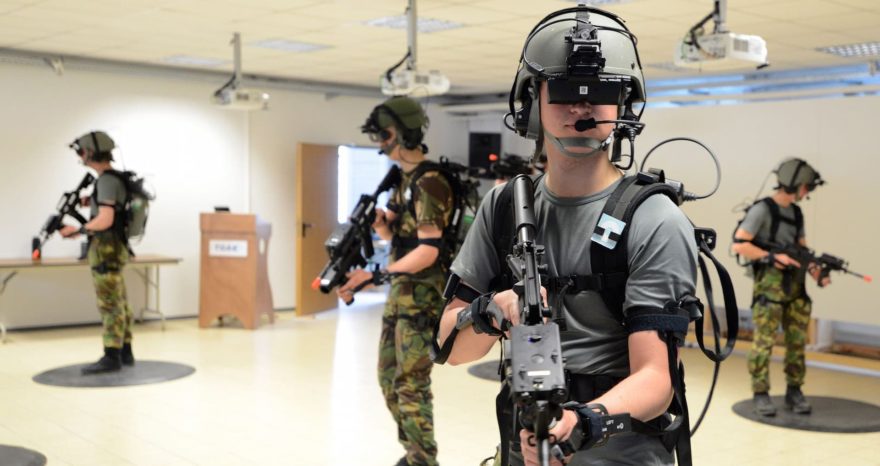The Range Facility Management Support System (RFMSS) is a web-based program that allows training units to schedule and reserve training areas, weapons systems, and other facility assets. It also automates Range Control Fire Desk operations and resolves scheduling, safety, and environmental conflicts.
RFMSS is an integral part of the Army training and testing areas, allowing the Department of Defense to manage and control military land use. It also provides decision support tools to estimate the carrying capacity of training and testing areas and the ability to calculate changes in land condition based on mission activity.
In addition, RFMSS supports all major range management processes. For example, it helps training units schedule ranges as far in advance as 180 days. It also helps training units resolve conflict related to air-to-ground, ground-to-air, weapon-to-event, and other training issues.
The RFMSS Functional Administrator is responsible for providing technical subject matter expertise relating to the integration of RFMSS with GIS, range complex master plan (RCMP), installation status report (ISR), army station and installation plan (ASIP), planning resource for infrastructure development and evaluation (PRIDE), Army Range Requirements Model (ARRM) and other systems relating to the supported Training Center(s). Quarterly reviews shall be conducted to validate that data elements within the GIS Quality Assurance Plans that pertain to RFMSS are consistent and accurate.
Qualifications include a bachelor’s degree in Computer Information Technology, Engineering/Math, or other scientific discipline and five years of relevant experience. Must have a comprehensive knowledge of Army range operations and the Sustainable Range Program (SRP).
RFMSS marine corps

Range Facility Management Support System (RFMSS) is a web-based application that allows units to request range training and track the status of their requests. The system enables training schedules to be approved, resolved, and updated throughout a training cycle.
RFMSS is a standard, integrated system that efficiently manages firing ranges and training areas aboard Marine Corps base Quantico, Virginia. It combines all major range management processes, including Request for Training Approval (RTA), unit and range control approval process, and scheduling, safety, and environmental conflicts resolution.
The RFMSS also provides a number of benefits, including the ability to display range data in an easy-to-use and interactive Geographic Information System GIS that reveals natural and manmade features such as trees, fish and wildlife habitats, types of soils, weather patterns, and archeological items of interest. This technology is a boon to range and training planners, enabling them to make informed decisions.
As a result, the rfmss system is used by nearly every unit on the MCBQ campus. This system allows range and training planners to make smarter decisions that reduce costs, improve effectiveness and ensure mission success.
The RFMSMS system has several functions, the most important being the ability to identify and communicate training requests in real-time, allowing the user to quickly respond to any queries or concerns. This functionality enables range staff to deliver training that meets the needs of all users and ensures the proper resources are available at the right time.
RFMSS fort bragg

The Range Facility Management Support System (RFMSS) is Fort Bragg’s online training planning and scheduling tool. It allows units to reserve ranges as far in advance of their desired training start dates as 180 days. It also provides a system to resolve training, safety, and environmental conflicts during a live fire and airborne jumps.
However, despite the many resources available to Fort Bragg’s Soldiers, there are some training needs that cannot be met within the current RFMSS system. For example, aviators must be able to execute two-ship gunnery drills in order to remain mission ready.
Unfortunately, this is not a simple task. According to Mark Murray, chief of operations for Range Control, if training is necessary for the completion of a mission, the RFMSS schedulers at brigade-level units are allowed to cancel previously scheduled events as long as they follow a protocol and provide a reason why.
For this process to work, commanders at the BDE and BN levels need to be made aware of the land utilization problem. They should be notified that their unit’s use rate is low and be encouraged to submit a memo.
As an added bonus, the RFMSS system should be able to notify commanders of category 1 and 2 range cancellations so they can be proactive in reserving space on available ranges. This would increase their utilization rates and ensure they have the best opportunities to conduct their training.
RFMSS user manual

The Range Facility Management Support System (RFMSS) User Manual is an electronic document that explains the operation of RFMSS and how to use it. The manual is available to any user that requests access to the program. It also contains important information about the system and its equipment.
RFMSS tracks current training facility statuses, maintains safety and situational awareness during training operations and validates and collects utilization data. It is an effective and efficient tool for coordinating the scheduling of training events at installation ranges, training areas, barracks/classroom facilities, and other installation resources.
To use RFMSS, users must fill out a request form and submit it to the system. This request form has three tabs to fill out: Weapon/Ammo, Communications, and Vehicle.
The weapons tab requires that users enter the weapon and ammo they will be using on the training range. This is necessary for creating the Surface Danger Zone (SDZ), a line of demarcation that delineates where ground weapons firing or demolition activities are likely to occur.
This can be an especially important tab to fill out if you plan on staying on the range for multiple days because it allows the RSO and OIC that you will be working with to know what is going on on the range when you are there. It is important to fill out the vehicle tab as well because it gives the Fire Desk Operators and the RSO/OIC information about what vehicles are occupying the range and how long they will be there for.
